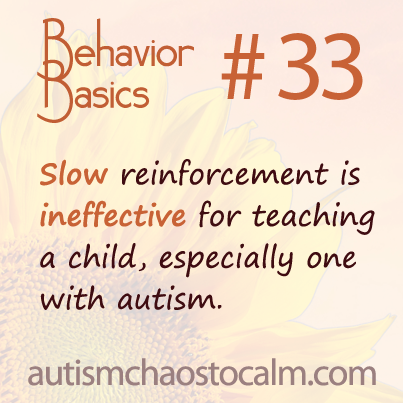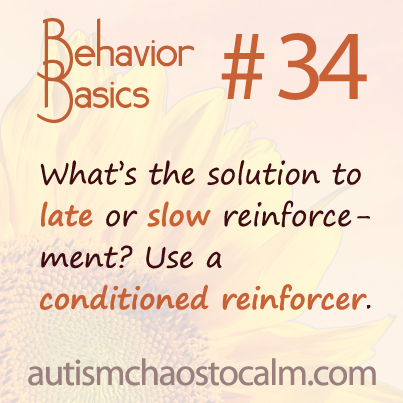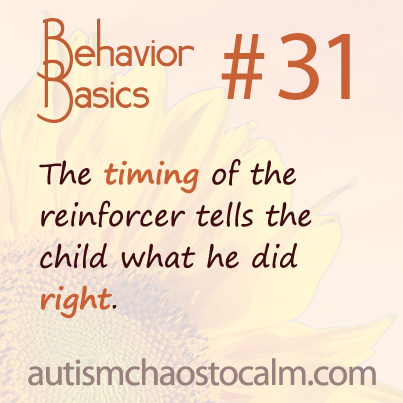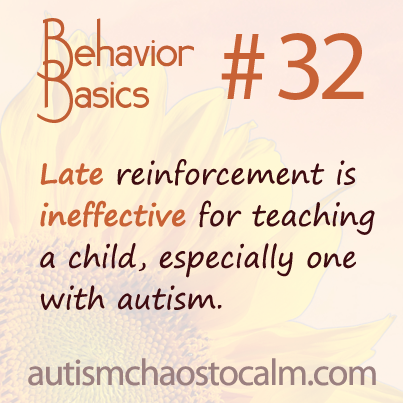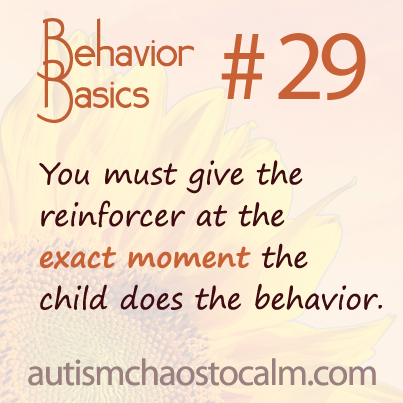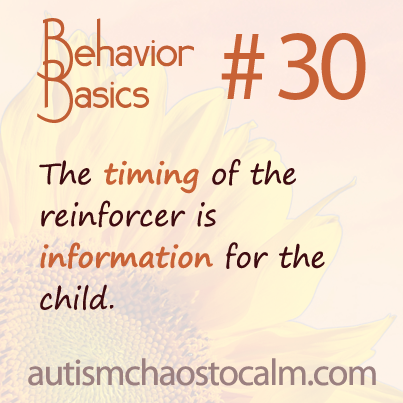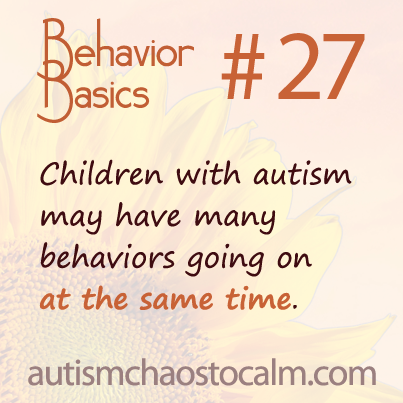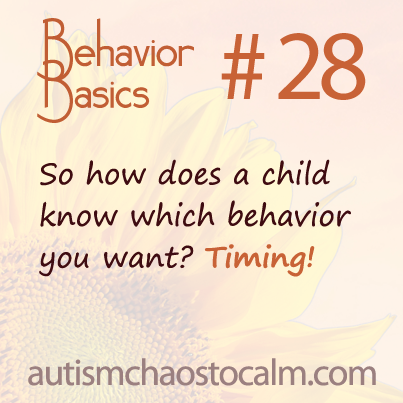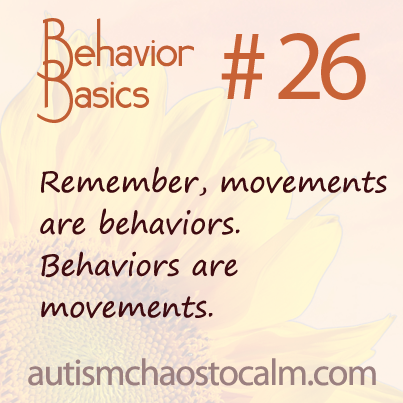 35. A conditioned reinforcer is something previously neutral that has gained reinforcing potential.
35. A conditioned reinforcer is something previously neutral that has gained reinforcing potential.
A conditioned reinforcer can be any quick sound or action. It can be a whistle, a tap, a flash of light, or a click sound made by a small plastic device called a “tagger.” Initially, the sound or flash has no significance for a child, but, by pairing the sound with a treat or other pleasing consequence, the “tag” (click sound) becomes an important event for the child. The tag means that a treat is coming. A tag means that the child did something right or achieved something. The tag is good news! The tag is worth paying attention to – this is very important. The tag teaches the child to focus on his own actions. What was I just doing that caused Mom to tag and hand me a treat? Was it swinging my arm or looking at the toy? Hmmm, I’ll try swinging my arm again. Nothing, no tag. Okay, I’ll trying looking at the toy again. TAG! Oh, that was it! I get it. I’ll look at the toy some more! Boy, Mom sure seems happy when I look at a toy. I know she’s happy because she tagged and gave me a treat, and I’m happy too.
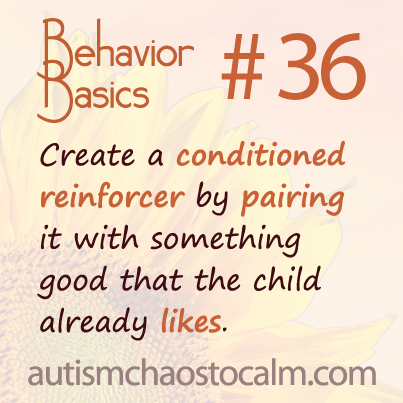 36. Create a conditioned reinforcer by pairing it with something the child already likes.
36. Create a conditioned reinforcer by pairing it with something the child already likes.
How does the child learn that the acoustical signal, the “tag” (click sound) has meaning? You teach the child by “pairing” the tag with a treat. This can be achieved very quickly. When I first got a tagger, I sat down next to my son with a fruit roll-up and proceeded to tag and hand over slivers of fruit roll-up. It went like this: tag/hand over sliver, tag/hand over sliver, tag/hand over sliver, continuously. In 25 seconds he figured out that the tag meant that a treat was coming. 25 seconds! That’s all it took. I never had to repeat that lesson. I could immediately start using the tag to teach new skills. Try it! It’s great fun to teach a child with autism something in just 25 seconds!
REMINDER: This concludes the wrap-up of Behavior Basics for the week. Please remember the schedule: On the release date of each module, the Behavior Basics for that module will be compiled into a PDF ebook available from our blog and Facebook page. Click on this link to download the entire series of 42 Behavior Basics for free: http://statictab.com/m7bizwt.
